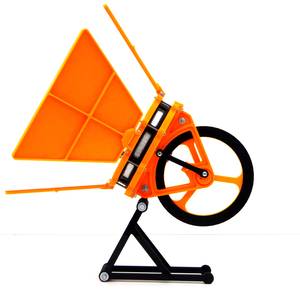
A 3D printed Stirling Engine generates power from absorbed heat. Courtesy of Reprap Windturbine.
Latest News
April 2, 2015
By its very nature, additive manufacturing (AM) is a reasonably green manufacturing process. Systems only use as much material necessary to complete a build. This saves on the carbon footprint left by a shortened supply chain, and objects can be recycled and the material reused.
AM can also be used for more direct conservation efforts, as demonstrated by 3D printed solar panels. While that particular use might be a bit high tech for the average user, a German designer named Andreas Haeuser has created plans that allow nearly anyone with access to an AM system to build their own Stirling Engine.
 A 3D printed Stirling Engine generates power from absorbed heat. Courtesy of Reprap Windturbine.
A 3D printed Stirling Engine generates power from absorbed heat. Courtesy of Reprap Windturbine.The Stirling Engine was first introduced in 1816 by Scottish inventor Robert Stirling. The engine uses the push and pull created by opposing heat gathering and cooling elements to propel a cylinder, which can then be used for power.
While many Stirling Engines use liquids to produce energy, Haeuser’s 3D printed design can generate power from the heat produced by the sun. From his website:
In sunny weather, the Stirling Engine can be driven directly by the sun rays. On less sunny days reflector mirrors can be mounted to increase the efficiency enormously. Without sunlight, in the dark or indoors, the Stirling Engine can also be operated. For example, on a cup of hot tea, or on the heatbed of your 3d printer.
The majority of Haeuser’s design was built using 3D printed parts, minus a few easily obtainable bits and pieces (bolts, screws, etc.). Instructions on how to build the engine can be found on his website.
It’d be easy to dismiss this design as a toy or science fair type experiment, but solar powered Stirling Engines are used to generate energy in a number of sunny locations around the world. By adding 3D printing to the mix, Haeuser has made it possible to build an inexpensive remote energy generator, which could be used in emergencies or in areas without access to electricity.
Below you’ll find a video about the Stirling Engine.
Source: Reprap Windturbine
Subscribe to our FREE magazine, FREE email newsletters or both!
Latest News
About the Author
John NewmanJohn Newman is a Digital Engineering contributor who focuses on 3D printing. Contact him via [email protected] and read his posts on Rapid Ready Technology.
Follow DE





